In ancient times, the Kii Peninsula, south of Osaka and Kyoto, was known as the land of the gods, and to this day is considered the spiritual home of Japan. This wild area of Japan has been home to pilgrimages since ancient times, from nature worship to Buddhist and syncretic beliefs, and was recognized as a UNESCO World Heritage site in 2004. The Kumano Kodo consists of pilgrimage routes that were developed over centuries, each with its own purpose and level of trekking difficulty. A visit to the Kii Mountains combines the history, tradition, and culture that makes it an unparalleled outdoor experience. The route connects important places of worship in Koya, Kumano, and Yoshino, located in Nara and Wakayama Prefectures. The majority of these hikes and locations were originally a part of nature worship routes, so they are out in the open air and are perfect for those who would like to travel without the risk of coming across crowded locations, or worried that they may find themselves in indoor spaces lacking ventilation.
Who is Kukai and why is he important?
Kukai (also known as ‘Kobo Daishi’) traveled to China in the early 9th Century and after studying there for two years returned to Japan and founded Shingon Esoteric Buddhism, the base of which is at Koyasan.
Kukai’s teachings about Shingon (meaning “fundamental truth”) Esoteric Buddhism were foundational in the rise of Buddhism in Japan and differed in two vital ways from the teachings of Buddhism that had reached the country from China and the Korean Peninsula in the 300 or so years up until that point. The first is that Kukai’s teachings stated that as opposed to waiting for the afterlife to become Buddha, we can become Buddha as we are, in our current body, through meditation. The second is that instead of needing translators to pore over scriptures to decipher the words of Buddha, we can instead take note of the natural world — animals, trees, and forces such as the wind — messages from the universe of which to read all we have to do is feel. These concepts transformed Buddhism from a practice only for the wealthy, educated elite, into a belief system that could flourish among the masses.
The Choishi Michi
The Choishi Michi (町石道) is an 20-kilometer long pilgrimage from Jison-in Temple to Koyasan, which takes around seven hours to walk and can be done in one day. The route is wholly outdoors, trekking past well-ventilated temples and through secluded valleys, and is best done in autumn or spring.
The Choishi Michi is unique because as opposed to buildings or regions, the path itself is dedicated as a UNESCO World Heritage site. This path is considered a shortcut to paradise, which means that if anybody walks it to Koyasan, all their sins will disappear. Koyasan was originally restricted to men only, but this changed after the ban on women was abolished in 1872. The large stone markers along the path are called ‘Choishi’, and are milestones along the way. One ‘cho’ represents 109 meters, and there are 180 Choishi on the path to Koyasan, with another 36 leading to the mausoleum of Kukai.
One of the highlights of the path is the Kesakake Rocks (literally robe hanging rocks) which are said to show the exact border between the regular world and the sacred area of the mountain. As Kukai was climbing up the hill, he took a rest and hung his robe over a v-shaped gap in the rocks. It is said that if you can go through the small gap in the rocks you will be given longevity — if you want to try, wrap a picnic sheet around your body and you will be able to slide through without getting stuck or dirty.
Jison-in Temple
The first stop along the Choishi Michi from Kudoyama Station is Jison-in Temple (慈尊院). Historically, only men were allowed to enter Koyasan, so Jison-in Temple, at the start of the Choishi Michi, is known as the women’s Koyasan. This becomes instantly apparent as you walk through the entrance into the temple complex and come across hundreds of ‘ema’, or wooden plaques, adorned with stylized imagery of female breasts. To this day women come to this temple to pray for a range of things relating to childbirth, or breast cancer. Once you pass the impressive Worship Hall, you are met with a staircase leading up to a shrine and the beginning of the Choishi Michi. Don’t forget to pick up a stamp book here in which you can add stamps from all of the temples leading up to Koyasan.
The large hall is the worship hall, and the smaller main hall houses a statue of Buddha which was crafted in the 9th century. This Buddha, a national treasure, is only shown to the public once every 21 years when the roof is replaced, which most recently occurred in 2015. Across towards the back of the temple area are two statues — a statue of Kukai in his traveling outfit representing him on his pilgrimage, and a statue of a dog, Gon, who until he passed away recently, would help guide people along the trail to Koyasan.
Niutsuhime-Jinja Shrine
Niutsuhime-Jinja Shrine (丹生都比売神社) is a two-hour walk from Jison-in Temple. The shrine is a detour from the path to Koyasan and quite a way down the hill, so there is a shrine gate at the top so you don’t necessarily need to go down to it. As legend has it, while Kukai was looking to start his Shingon teachings, he met a hunter who released two of his dogs which guided Kukai up to Koyasan. The hunter was the child of Niutsuhime, and at the top of Koyasan he met Niutsuhime who granted him the land to establish his base of Shingon Esoteric Buddhism. This large shrine complex originated 1,700 years ago, and consists of four main shrines, one of which contains Niutsuhime — the protector of Koyasan.
One main feature of the complex is a semi-circle-shaped bridge. Usually semi-circle bridges are not for people to travel across but only for Kami-sama, or the gods, but at this shrine, it is possible to walk across it.
Reaching Koyasan
The gate to Koyasan (高野山) used to stand a few hundred meters further down the mountain and was a traditional style torii gate. The present Daimon (大門), rebuilt in 1705, houses two magnificent guardian deity statues. As Buddhism was gaining influence, the gate was turned from a regular gate into the magnificent structure that sits here now, but with a new purpose — as a storehouse for weapons to protect the land against invaders.
Kadohama Gomatofu Sohonpo
As monks are forbidden from eating animal products and foods with strong aromas or flavors, ‘Shojin Ryori’ is the style of food they eat on a daily basis. Consisting of mainly vegetables and grains such as rice, they lack protein, so sesame is also a staple of their diet. As it can be hard to eat and digest a handful of sesame seeds with every meal, sesame tofu made from milled sesame seeds allows them to take in enough protein without compromising their ideals. The sesame tofu served at Kadohama Gomatofu Sohonpo (角濱ごまとうふ総本舗) has been a souvenir for pilgrims since the Meiji era.
There are two kaiseki selections that come highly recommended. The ‘Kongo-Kaiseki’, or diamond mandala, and the “Taizo-Kaiseki”, which represents the womb mandala. The Kongo-Kaiseki is said to represent the wisdom world, and the Taizo-Kaiseki is said to represent the mercy world. You can choose which of these worlds you would prefer to gain from (I chose Taizo-kaiseki and it was delicious!). Although gomatofu doesn’t actually contain any soybean products, it has the consistency of regular soy-based tofu, but with a light sesame taste.
The Danjo Garan
The Danjo Garan (壇上伽藍) is a huge Buddhist complex, and is a focal point where Kukai’s vision and teaching are still alive to this day — so the majority of Buddhist ceremonies and rituals are held in this Garan area. As with the daimon entrance gate, these buildings have been ravaged by fire over the centuries, mainly due to lightning strikes, and have been rebuilt many times. There is a large middle gate that was reconstructed in 2015, with four guardian deities enshrined in it to protect it from all four directions. The area itself is incredibly impressive, with each building you come across more grandiose than the last.
The whole area was designed by Kukai and is a Buddhist Temple complex, but the first construction that was made was a Shinto Shrine to show his respect to the Shinto Kami-sama.
Kongobu-ji Temple
The name Kongobu-ji (金剛峯寺) was taken from a sutra and means Diamond Peak Temple, and Kongobu-ji was the original name of the whole Koyasan area. The temple was built 400 years ago by Toyotomi Hideyoshi in honor of his deceased mother, and is now the headquarters of Koyasan Shingon Esoteric Buddhism.
The impressive rock garden which snakes its way around the outside of one of the temple’s buildings is Japan’s largest, and the design of two dragons in the clouds is constructed from 140 granite stones. If you would like to witness an important ceremony, February 14th is the eve of Shakyamuni Buddha’s passage into nirvana, and visitors can watch the monks chanting in the main hall and eat udon noodles at midnight.
Rengejo-in Temple
Rengejo-in Temple (蓮華定院) is a beautiful temple with modern amenities and rooms for guests to stay in. At 5 PM guests can experience susokukan breath-counting meditation — observing our breath with numbers. It was almost dark outside as we began our meditation. The meditation room was filled with a warm glow from the lights, and in front of us was the area for the Buddhist priests to sit with a small golden two-tiered pagoda in the center. The priest entered and told us to sit comfortably, and we took on Buddha’s pose and the meditation began.
The idea of susokukan meditation is to breathe in, breathe out, and then count, then breathe in, breathe out, and count. The goal is to count to ten and then restart the count again at one. I was so relaxed and exhausted during this 40-minute meditation period, that I was able to remember my count and make it to ten exactly twice.
Okuno-in
Okuno-in (奥之院) is one of Japan’s largest burial grounds by counting memorials, but it is not a cemetery. The plaques and memorials do not hold the remains of the deceased — or maybe only a bone or lock of hair — brought here to help the departed get to heaven. This is also the home of Kukai’s mausoleum, who since he chose to enter the mausoleum in 835, is eternally meditating. Kukai’s wish is, “If this world ends, people end, and once everyone reaches nirvana, my wish ends.”
In the modern part of Okuno-in sit memorial stones built by companies, with the traditional part made up of large memorial stones commemorating historical people and feudal lords. The grounds are impressively large as are the trees and monuments, making for an extremely atmospheric walk. I highly recommend coming during the early morning as the morning light pierces the trees, so you can take in the vastness of this space without the crowds of visitors who will arrive later in the day.
On to Yoshino and Kinpusen-ji Temple
Yoshino, in Nara Prefecture, is another small mountaintop village that is best explored early in the morning. It is best known for its sweeping groves of cherry blossoms in the early spring, and is one of the best places in Japan to see cherry blossoms. Among all of the classic wooden structures in Japan, the Zao-do main hall of Kinpusen-ji Temple (金峯山寺), part of the UNESCO World Heritage Site, is the second-largest after Todai-ji Temple in Nara. It is 34 meters tall and is supported by 68 natural wooden pillars, the size and variety of which vary. The reason a wide variety of trees is used is that a ‘Yamabushi’, a practitioner of Shugendo — someone who participates in ascetic practices for the purpose of attaining enlightenment — can feel like they are in a deep valley in the mountains while in the temple.
Shugendo is a form of mountain worship integrated with Buddhism, Taoism, and Shintoism. For when the Yamabushi see the beautiful sunshine they make a prayer to the sun, or when they see a beautiful waterfall they make a prayer to all of nature. Those feelings and the different teachings blended together make Shugendo a unique religion originating in Japan.
Inside the Zao-do Main Hall of Kinpusen-ji Temple we watched training monks using fire and chanting. In direct contrast to the calm, prescribed nature of the Shingon Buddhist monks we had come in contact with previously, the training of the Shugendo sect was far more visceral.
Chikurin-in Gunpoen
The building and land of Chikurin-in Gunpoen (竹林院群芳園) is a Buddhist temple with over 1,300 years of history. The garden was built in the 1500s, and it is now known as one of the three famous Yamato gardens.
The Meiji Period starting from the late 19th century was a big turning point in the temple’s history when Shinto was declared the main religion, and all of the precious Buddhist statues from the temple were taken and hidden in the nearby Yoshimizu Shrine precinct. The next turning point was during the Second World War. Students from nearby cities such as Nara and Osaka needed somewhere to escape from the air raids, so hundreds of students came here to stay. To be able to provide beds and meals for so many students they had to register with the central government, so they officially changed from being a temple to a ryokan during the war. Many members of the Imperial family have visited over the centuries, including His Majesty the Emperor Emeritus Akihito and Her Majesty the Empress Emerita Michiko, and Her Imperial Highness Princess Aiko.
Asuka Village: The first home of Buddhism in Japan
From Yoshino and Shugendo, we next traveled north to Asuka village (明日香村), the original home of Buddhism in Japan. It is here that Buddhism first took root, and although the current temple in Asuka village is quite small, it belies the role the village played in the introduction of Buddhism to Japan. The best way to explore the picturesque Asuka village is on an electric bicycle, which can be picked up right next to Asuka Station. On an electric bicycle you can easily travel around the village at your leisure without needing to rely on local buses or other forms of transport.
According to the Chronicle of Japan, Asukadera Temple (飛鳥寺) was founded in 596 making it the first full-scale Buddhist temple in Japan, and was 20 times larger than the current incarnation. Along with a religious belief structure, Buddhism also brought to Japan modern construction techniques (such as multi-level buildings and tile roofs); to the aristocrats of the time, this heralded a new technological era.
Murouji Temple
Murouji Temple (室生寺) is one of the oldest buildings in Uda city established in the 8th century, and the reason it remains intact is the moisture content of the air here, which has not only protected the structure of the building from decay, but also helped keep the paint on the walls for over 1,000 years. Women were prohibited from entering Koyasan up until 1872, but Muouji Temple welcomed women from ancient times and was called the “Koyasan for Women”, and it continues to be a popular destination for female visitors to this day. There is also the smallest five-storied pagoda built outdoors in Japan, which was damaged by a typhoon and rebuilt in 2000.
NIPPONIA Tawaramoto Maruto Shoyu
Like many other areas in Japan, there were resource shortages immediately after the Second World War in Nara Prefecture, so soybeans and wheat were used as food and not used for brewing products like soy sauce. This caused the Tawaramoto Maruto Shoyu soy sauce brewery (with a history of 260 years) to reduce production and eventually close.
After the soy sauce brewery lay dormant for decades, the current owner collaborated with a company called NIPPONIA, famed for restoration of Japanese traditional old houses, to convert the multiple soy sauce brewery buildings into a chic restaurant/cafe/ accommodation facility. The restaurant employs locals, and focuses on local produce and products. Their flagship lunch is a special six-course meal that features different forms of soy sauce with every course.
Ohmiwa Jinja Shrine
When Japanese people read the name, Ohmiwa Jinja Shrine (大神神社), they often misread it as Okami Shrine, or God Shrine. The main deity of Ohmiwa Jinja Shrine is the mountain itself, so it is a combination of nature worship and indigenous Shinto beliefs. This area is unique in that if you are planning to go up to Mt. Miwa, you will need to register as they keep strict controls on how many people can walk into the sacred area at the same time. They say this area is the birthplace of refined sake and Ohmiwa Jinja Shrine has a long connection with the sake industry — if you have been to a traditional izakaya (Japanese style pub) or sake brewery in Japan, you may have noticed a cedar ball hanging in front of the building — traditionally this cedar ball comes from Ohmiwa Jinja Shrine. When the cedar ball is green, it means that newly brewed sake is available there.
Kawai Brewery
Kawai Brewery (河合酒造) has a history of around 280 years of brewing sake at this location, and the main building is designated by the Japanese Government as an Important Cultural Property. Nishikawa-san is the CEO of Kawai Brewery. Her favorite part of the sake brewing process is making ‘koji’, which is used to kick start the sake brewing process. The process takes 48 hours in a brutally hot environment where she is constantly worrying about whether her employees will faint from the heat, but she loves it because the koji evolves so quickly that the changes can be seen day by day. The Kawai Brewery signature brand is called Shusse Otoko and is a long-seller, but Nishikawa-san is also involved in developing Nara Prefecture yeast and rice to create new flavors and tastes.
The Kii Mountains are a fantastic place to spend a few days for those interested in getting to know the soul of Japan, as well as visiting some of the best temples and shrines in the country. For those who would like to combine the spiritual with the physical, such as hikes and other outdoor activities, a journey around Nara and Wakayama should not be overlooked.
Sponsored by Kinki District Transport Bureau, Wakayama Tourism Bureau, and Nara Tourism Bureau


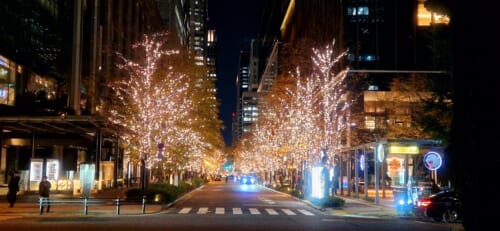
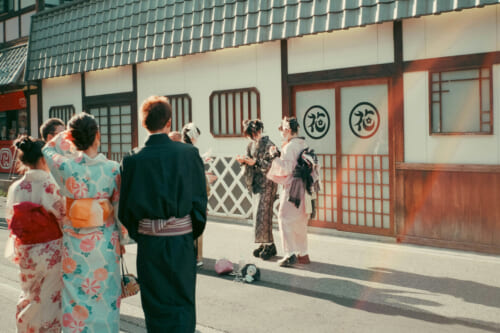
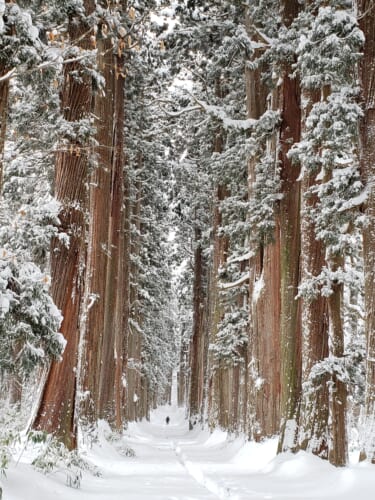
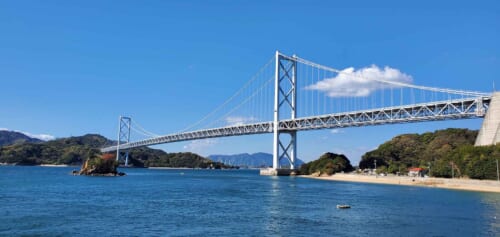
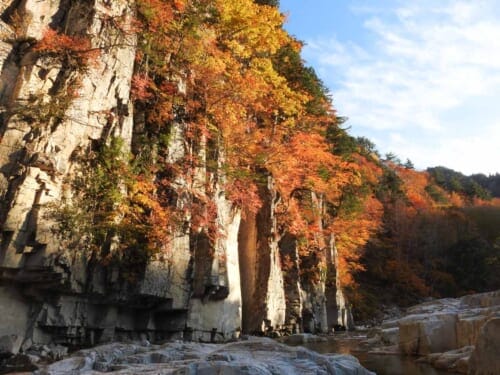
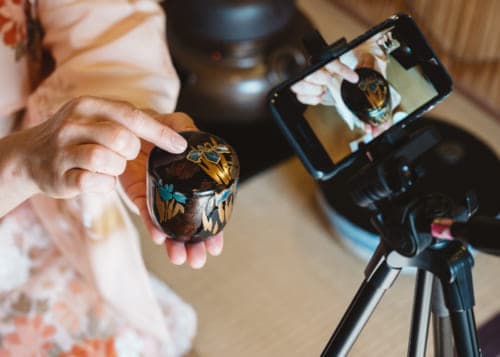
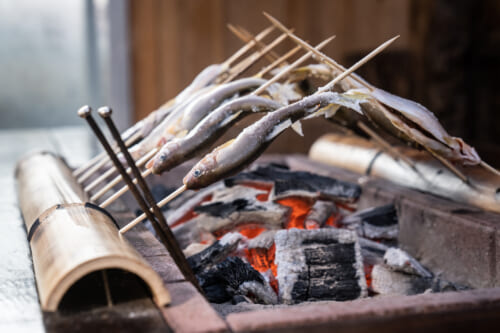


No Comments yet!